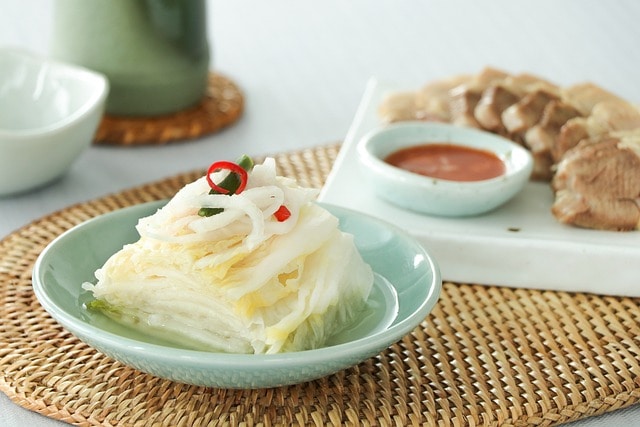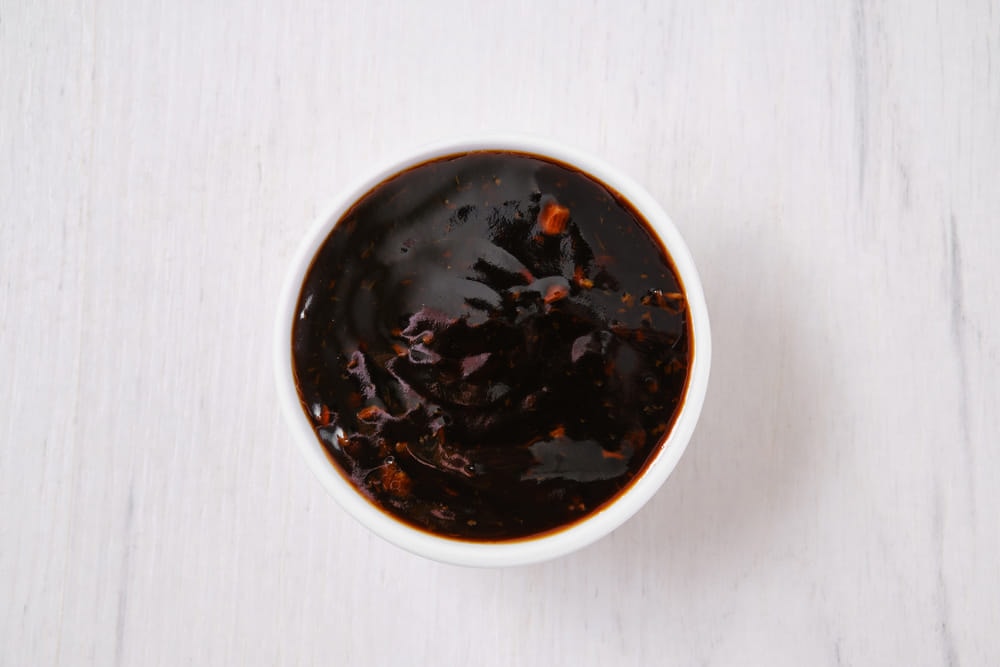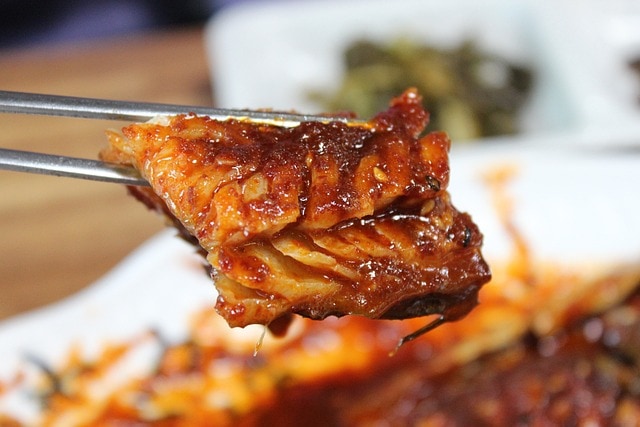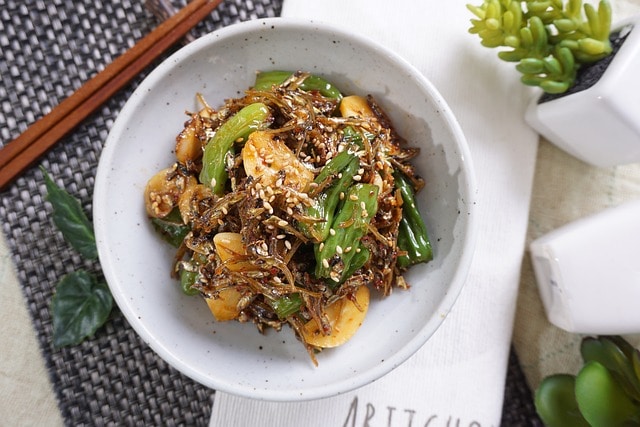Korean Side Dishes
When it comes to delicious dishes, and bold flavors, Asian cuisine is the way to go. Asian food is known for their use of exotic and yet delicious ingredient combinations, to prepare amazing dishes that will excite your taste buds.
Korean food is probably one of the most known of all the Asian cuisines. It is considered a healthy and light alternative dining option – especially for those with restricted dietary options.
However, it might be the Korean side dishes that make Korean cuisine an attractive option for people as they are delightfully simple yet packed full of flavor.
There are several Korean BBQ side dishes that people must try at least once. Among those are Kimchi, beef bowls, and gim gui, as they are some of the most popular in Korea.
It’s easier than you might think to create some of these recipes at home, as you may have some of the ingredients on hand already. If you’re ever wanted to try Kimchi tuna, fried rice, or bibimbap – here’s your chance!
What are The Most Popular Korean Side Dishes?
With a variety of dishes, flavors, and textures, people around the world have become fans of Korean food. And that includes many popular Korean side dishes.
These main dish companions are just as popular as the main attraction. Here are some of the most popular Korean side dishes.
Gim Gui
This simple but delicious dish is one particular favorite of Korean side dishes. Consisting of salty and crispy roasted seaweed, this common Korean restaurant’s menu item is a must have.
It has a great flavor as well as a high nutritional content, and is considered the perfect companion dish for vegans or people on low-carb diets. Koreans like to eat gim gui with a cold beer, this enhances the salty flavor of the seaweed.
Traditionally, Koreans cooked their own gim gui, but with its ease of accessibility, many Koreans opt for the store-bought version for convenience. When served with steamed rice this tasty dish adapts to a main course easily.
Kongnamul Muchim
Soybeans are one of the most used ingredients in Korean and Asian cuisine. Kongnamul muchim is made with seasoned soybean sprouts. To prepare the soybean sprouts, they are cooked minimally to retain their firmness and crispy to the bite.


The sprouts can be mixed with a variety of ingredients to add extra flavor. Some favorites among Koreans are scallions, soy sauce, sesame seeds, sesame oil, and even red chili flakes. The mild flavor of the sprouts really helps to enhance the overall flavor of whatever seasoning you use.
Like many Korean side dishes, kongnamul muchim can be used as a topping for other dishes like the bibimbap.
Stir-Fried Octopus
Korean cuisine often includes seafood in its recipes, and this Korean side dish it’s no exception. Stir-fried octopus is just as it sounds, but it is anything but simple in flavor.
A classic side dish in Korea, octopus is sliced then stir-fried along with a combination of ginger, gochujang chili paste, garlic, onions, cucumbers, chile peppers, and other vegetables.
Stir-fried octopus is often served in its sauce, with roasted sesame seeds on top. It is one of the favorites to eat with stews or soups.
Kimchi
Kimchi may be considered one of the most popular Korean side dishes. Kimchi is another dish that has gained in popularity with Korean restaurants in the US.
This dish fits well with almost any Korean dish. Whether it’s salty, spicy, sweet, sour, or a mix of all, Kimchi is bold and delicious. It is prepared with sliced cabbage and vegetables, which are marinated along with salty fish paste, ginger, garlic, sugar, leeks, and hot chili peppers.
Although Kimchi is starting to gain recognition in western countries, the origin of Kimchi dates back two thousand years, as evidenced in written historical Korean documents. Historically, kimchi was soaked in brine and left fermenting for days. Later, people began adding other seasonings to the ingredients.
Korean BBQ Side Dishes You Must Have
When it comes to delicious Korean cuisine, Korean BBQ side dishes are probably one of the first that come to mind. Korean side dishes like the ones below are some of the most popular among Koreans and those in the western countries alike.
Korean Green Salad
This Korean green salad is the perfect companion for any full-protein Korean main dish. As the name implies it is made of mixed greens.
You can use lettuce, baby spinach, and arugula, however, other ingredients like cucumber, apples, and purple onions add another flavor layer to the salad.
However, the real secret of this salad is the sweet and spicy Korean dressing. With its soy sauce base, the Korean green salad dressing brings all the flavors together.
And since it is light and healthy it is probably one of the most versatile of the Korean BBq side dishes.
Spicy Korean Coleslaw
If you’re looking for a bolder side dish option, you will love spicy Korean coleslaw. Similar to the Americanized version of coleslaw, you’ll find plenty of cabbage as the base.
This full-of-flavor salad is prepared with Gochugaru, rice vinegar, Korean fish, and sesame oil. Its flavor is predominantly spicy, but it also has sweet and tangy flavor layers as well.
This is one of the most prepared Korean BBQ side dishes, due to its versatility and combination of flavors, it can be combined with any BBQ Korean dish. Such as Korean tacos or burgers.
Baek Kimchi (Non-Spicy White Kimchi)
White kimchi is the non-spicy version of regular kimchi. It is the preferred kimchi for those with sensitive palates like kids and non-spicy food lovers.
One of the biggest differences between red kimchi (spicy) and white kimchi (non-spicy) is that white kimchi doesn’t use red hot chili flakes. Instead, it is soaked in a fruity salty brine.
White kimchi usually includes fish sauce to enhance all the flavors. Pine nuts, chestnuts, and even dried jujubes are sometimes added to elevate the kimchi flavors even more.
As one of the most popular Korean BBQ side dishes, this refreshing side dish fits perfectly with almost any Korean grilled BBQ main dish.

Introduction to Korean Appetizers
Appetizers are an essential part of the dining experience, as they are the introduction to the main course. Appetizers set the tone and prepare our palates for what is to come. In Korea, appetizers are no different. Koreans have several much-loved appetizers that have transcended the globe.
Below are some of the best Korean appetizers.
Bindaetteok (mung bean pancake)
This Korean pancake is one of the most popular appetizers in Korea. It is a Korean pancake that is prepared with mung bean flour.
Dried mung beans are the base of these pancakes. They are ground into a slurry mung bean pancake mixture or turned into a mung bean flour mix.
Chopped kimchi, bean sprouts, minced pork, and a variety of seasonings are then added to the mung bean pancake batter. These ingredients give it a savory and nutty taste. The batter is then cooked in a hot pan, where they are served with pickled onions, kimchi, or Korean pancake sauce.
Kelp Noodles
The kelp noodles (or cheonsachae) are semi-transparent noodles made from sea tangle or edible kelp. They are also known as angel noodles.
Since they are made without any added grain flour or starch, they are a perfect vegan and gluten-free alternative.
Kelp noodles are also a low-carb dining option for people on low-carb diets. And due to their texture they can be eaten either cooked or raw. Like cooked pasta, they take on the flavor of whatever you add, like sauces or seasonings.
When presented as one of the many Korean side dishes you may see them in salads or as part of the main course.
Hobak Jeon (Pan Fried Korean Zucchini)
Another delicious Korean appetizer, Hobak Jeon, is probably more well-known worldwide as Pan Fried Korean Zucchini.
Made with thinly sliced zucchini and mildly seasoned with salt and pepper. As the name “pan fried” suggests it is then covered with flour and soaked in an egg wash before deep-frying it.
Even though you can prepare Hobak Jeon any time of the year, summer is the perfect time to prepare this dish. It is commonly served with a Korean dipping sauce and enjoyed on its own.
Are Side Dishes Free in Korea?
Asian cuisine has several differences when compared with western food preparations. Korean cuisine is known for its colored and strong flavor dishes, the wide use of vegetables, and its spicy presence in most preparations.
Korean side dishes, also known as banchan, is a companion for almost all meals. Korean diners have come to expect a side dish to be served along with their main entrees.
In Korea, whether you’re having a sweet, or spicy meal, you’ll likely get a banchan served along with it. Fortunately, for restaurant diners this means that almost all side dishes or banchan are free. In some cases, you can ask for an unlimited free refill of any of your side dishes.
When western travelers dine at a Korean restaurant, they are often surprised to discover that some main courses include up to ten different side dishes – all as part of their order.
The most common banchan is Kimchi. Due to its historical background, almost all Korean restaurants offer Kimchi as a side dish.
However, there are hundreds of side dishes you can choose from when trying Korean Food. Like Tteokbokki and Ganjang Gejang, which are Korean side dishes, mostly served at more high-end restaurants.

Easy Korean Recipes You Can Create at Home
Korean cuisine is one of the healthiest and most delicious cuisines in the world. Its wide use of vegetables and seasonings make these dishes some of the preferred dining options. If you want to prepare tasty Korean dishes at home, keep reading to learn how.
Bibimbap
This is one of the most famous Korean dishes worldwide. It is also the preferred and beloved dish for Koreans as well. Even if you haven’t gone to a Korean restaurant specifically, if you have had Asian food, you probably have had bibimbap(see bibimbap sauce for related information) at least once in your life.
Its name means “mixed rice with meat and assorted vegetables“. Bibimbap is a very versatile dish that allows you to make several variations from it, depending on your preference and diet.
You can easily add or remove any ingredient, which means there are quite a lot of variations among chefs. Some restaurants serve a vegetarian or vegan version.
Bibimbap is most often prepared with rice, meat, and vegetables. The more traditional recipe is made with raw meat and raw egg yolk. However, most western diners choose to have cooked ingredients.
To prepare bibimbap at home, you will need your preferred cut of beef, soy sauce, garlic, sesame oil, spinach, bean sprouts, shiitake, carrots, seaweed, and eggs as a topping. With these ingredients, you can prepare a delicious homemade version of the authentic Korean bibimbap.
Kimchi Fried Tuna Rice
Not surprising, rice is an important part of Asian cuisine. The same is true for Koreans. Probably the most popular version is fried rice.
Fried rice is an easy and delicious meal as it can be prepared with ingredients most people have available at home.
From protein to vegetables, and toppings, you are free to prepare your version of fried rice. The most common combinations are kimchi and bacon, kimchi and tuna, or anything with kimchi.
One way to prepare kimchi fried tuna rice is with canned tuna, aged kimchi, soy sauce, gochujang, and sesame oil as the base of the dish. This tuna kimchi fried rice version has a lighter flavor and it’s the healthiest option when compared with the bacon or spam version.
However, just about any version of kimchi fried rice is full of delicious umami flavor sauce that makes it a tasty dish.
Korean Soft Tofu Stew or Sundubu Jigae
Korean soft tofu stew, or sundubu jjigae, is one of the most popular Korean recipes, due to its spicy flavor.
Full of your typical Asian ingredients like soy sauce, pork, and kimchi, this Koren stew is a must-try when attempting Korean dishes prepared at home.
One of the things we love about this dish is that you can easily prepare it with a few key ingredients. Like American stews, you’ll need to prepare a stew base, and then you can experiment with some of the remaining ingredients.
Korean soft tofu stew can be prepared in a small stockpot, or if you have a traditional Korean earthenware pot known as ttukbaegi. The ttukbaegi can be placed directly over the burner or an open fire.
To prepare sundubu jjigae at home in the traditional style, you will need dried anchovies, daikon radish slices, dried kelp, dried shiitake mushrooms, garlic, onions, pork belly, kimchi, salt, sugar, Korean chili flakes (gochugaru), sesame oil, silken tofu, and scallions as a topping.
Beef Bulgogi Bowl
Bowls recipes have gained popularity in the western countries in the last decade. The Korean beef bulgogi bowl is a delicious beef bowl that you can prepare easily at home.
This tasty rice bowl is topped with juicy, tasty pieces of bulgogi, also known as steak, along with a variety of Korean seasonings and extras.
The seasoning is what gives it the extra special flavor that people crave. Some versions of this dish use lettuce leaves instead of a bowl when serving.
This easy recipe is versatile and delicious. You can easily substitute proteins and vegetables to suit your tastes. The key is to have fluffy white rice as the base for the flavorful slices of bulgogi, and all your favorite Korean toppings.
Traditionally, you would prepare this recipe with these ingredients: beef, kimchi, peppers, garlic, ssamjang sauce, pear, onion, ginger, soy sauce, brown sugar, sesame oil, scallions, carrots, and Shishito peppers.
Korean food is a wonderful Asian cuisine variety that continues to grow in popularity from year to year. As more westerners discover the exciting flavors of bibimbap, bulgogi, and kimchi, we see more and more diners request these dishes.
You’ll see that we’ve been influenced by these exotic flavors in our menu at Char’d Southeast Asian Kitchen. Our build-your-own-bowl option is inspired by the bowls in Korea that exchange toppings, sides, and proteins for a lighter version. From vegan, vegetarian, to gluten-free we want everyone to enjoy the delicious flavors from Korea. Stop by today and discover Char’d Southeast Asian Kitchen for yourself!

